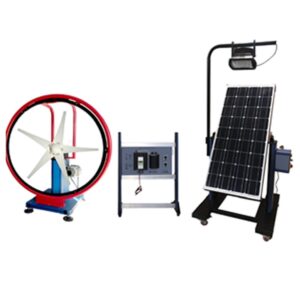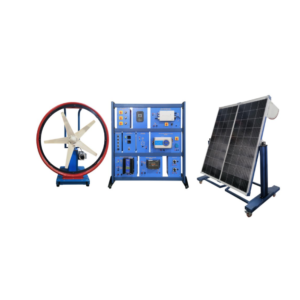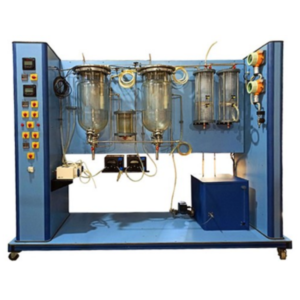The sun provides us a wide spectrum of solar energy. Except for the light that we see around us everyday, all of the other types of solar energy are invisible. The other parts of the spectrum consist of cosmic rays, gamma rays, x-rays, infrared, heat and ultraviolet energy. Solar radiation is a form of energy that can be transformed into other types of usable energies: electric, thermal, etc. The different systems that perform this transformation are part of the new clean technologies, which do not harm the environment. The Solar Thermal Energy Trainer allows to demonstrate solar thermal heating of domestic water in an illustrative manner and uses the thermosiphon solar system to heat water, or the traditional pumping system. The apparatus is a system that transforms solar energy into usable thermal energy. It uses the thermosiphon solar system to heat water or the traditional pumping system. In both cases, the absorbed thermal energy is given by the simulated solar radiation.In this trainer it is done using a panel with powerful luminous sources.
The trainer consists of the following elements:
- Thermal solar collector
- Storage Tank.
- Artificial Light Source (Solar simulator)
- Pumping system
The solar collector is mounted on an aluminum frame and the fluid (water) flows through cooper tubes. It has been developed in such a way that the geometrical shape of the surface allows the most efficient absorption. The accumulator tank is protected with an anti-corrosive material. It has a heating element with a safety device to prevent over temperatures. Lamps of the solar simulator emit radiation similar to the sun radiation, which is measured by a radiation sensor. The light is converted into heat in the solar collector and transferred to the heat transfer fluid. Three different configurations can be simulated with the solar simulator: all the lamps are turned on, half of the lamps are turned on in zig zag, or only one lamp is turned on. Besides, the apparatus includes a pump to perform a forced convection of the heat transfer fluid through the accumulator tank. The unit is fitted with sensors and meters to record the relevant parameters (temperature, flow and radiation) and are included safety valves for overpressure protection.




